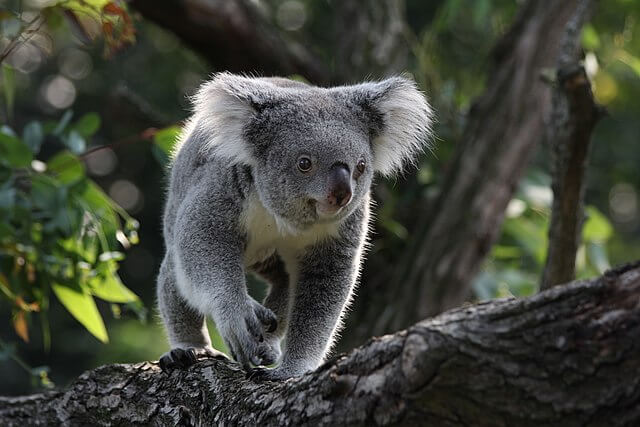
More clearing of koala habitat has been approved under Australia’s environmental laws in 2025 than in any year since the marsupial was listed as a threatened species, according to analysis by the Australian Conservation Foundation (ACF).
So far this year, 3,958 hectares of bushland have been approved for destruction across eight projects – including a coalmine in Queensland – an area equivalent to around four Sydney airports.
The ACF said the figures showed that despite the government’s pledge of “no new extinctions”, existing nature laws were failing to shield the endangered species from further harm.
“Given that the koala has been recognised as threatened with extinction since 2012 and therefore should be protected from harm, this underscores the total failure of the current laws to keep trees in the ground and prevent the further decline of the species,” ACF nature campaigner Darcie Carruthers said.
“The very law meant to protect nature is so poorly enforced that it has failed to stop nearly 2.3m hectares of likely koala habitat from being bulldozed and cut down,” Carruthers said.
The analysis was released as New South Wales declared its long-awaited Great Koala National Park – hailed as a “historic” victory by community and environmental advocates who had campaigned for more than a decade.
Carruthers said a forthcoming overhaul of the EPBC act “must set clear rules to protect habitat for threatened species like the koala, close loopholes that enable rogue bulldozers and establish an independent watchdog to enforce the law”.
Koalas were first listed as vulnerable under federal law in 2012. Their status was escalated to endangered in 2022 after experts warned of worsening declines, with habitat loss and fragmentation identified as a major and growing threat.
The ACF’s review examined project approvals under the Environment Protection and Biodiversity Conservation (EPBC) Act affecting koala habitat. Separately, it drew on state government land-clearing data from New South Wales and Queensland to calculate the total amount of likely koala habitat lost between 2011 and 2023 – the most recent year with available figures.
It found that 2,295,134 hectares of bushland – more than twice the size of Greater Melbourne – had been destroyed during that period. Of this, more than 1.9 million hectares was in Queensland. The ACF said 98% of that clearing had not been referred for federal environmental assessment, with agriculture identified as the primary driver.
The analysis also found that native forest logging, particularly in New South Wales, had contributed to the loss, with 391,170 hectares of likely habitat destroyed by logging operations in the past 12 years.
Environment minister Murray Watt has said the government’s promised reforms will be introduced to parliament this year, warning that any delay would both deter investment and cause further environmental damage.
A 2020 review of the EPBC Act by former competition watchdog chair Graeme Samuel concluded that successive governments had failed to protect Australia’s unique wildlife and ecosystems, which were in “unsustainable decline”.
Dr Kita Ashman, an adjunct professor at Charles Sturt University, urged the government to implement Samuel’s recommendation to abolish the broad exemption from federal environmental laws granted to native forest logging under regional forestry agreements between federal and state governments.
“The way regional forests agreements operate under the EPBC Act is effectively as a backdoor for destructive practices like logging to continue with very little scrutiny,” she said.
“If we remove this loophole, it will mean climate refuges and places that are critical for the survival of the species will remain intact.”
A spokesperson for the federal environment department said all projects referred to the government were assessed on a “case-by-case basis” and that developers were required to demonstrate avoidance and mitigation of environmental harm wherever possible.
“The Australian Government is committed to strengthening and streamlining our national environmental laws and establishing a national environment protection agency (EPA),” they said.
“One of the key pillars of the new laws will be stronger environmental protection and restoration including through introducing new national environmental standards. These standards will improve environmental protection and guide decision making.”
They said Watt was consulting extensively ahead of the reforms, which would deliver “a balanced package of changes, based around the recommendations of the 2020 Samuel Review”.
The spokesperson also noted that the federal Saving Koalas Fund has invested more than $76m in conservation measures.
——————————————————————————
At Natural World Fund, we are passionate about restoring habitats in the UK to halt the decline in our wildlife.

